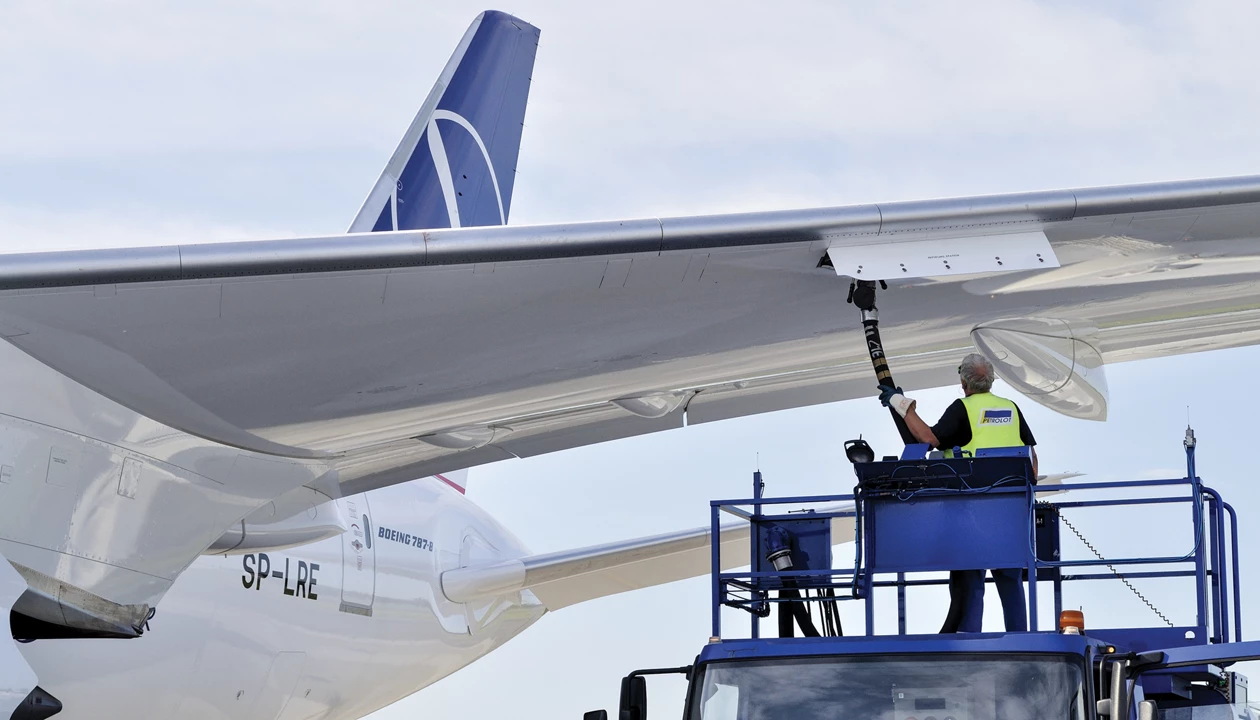A new study reveals the secrets of how nickel catalysts use electricity to convert carbon dioxide to fuels, particularly long-chain and branched hydrocarbon fuel molecules.
Traditionally, scientists have relied on Fischer–Tropsch synthesis, a carbon-coupling process, to convert syngas to long-chain hydrocarbons. Syngas is a mixture of hydrogen and CO, which can be made by treating carbon dioxide with hydrogen. However, these methods “require high temperatures and pressures, [whereas] our electrochemical route runs at ambient conditions with green electricity,” explains lead author Boon Siang Yeo, an expert in electrocatalysis at the National University of Singapore.
What’s more, chemists have long counted on copper catalysts to convert carbon dioxide to fuels, but this process comes at a cost—they produce shorter molecules. Nickel, on the other hand, is unique in the production of butane, pentane, and even hexane, longer hydrocarbons than those created with copper catalysts, Yeo says.
Moreover, nickel catalysts allow researchers to control the proportion of branched hydrocarbons, which are attractive as components of gasoline and fuels because of the better combustion properties and higher octane ratings. “[It’s] an electrochemical route to gasoline-range fuels,” says Yeo, whose study was published recently in the journal Nature Catalysis.
Electrochemical reduction of CO2 to make long-chain hydrocarbons is challenging, according to Magda H. Barecka, an expert in carbon conversion and electrochemistry at Northeastern University in Boston.
While copper can’t create long, branched hydrocarbons, the nickel catalyst in the new study “delivers important products for large-scale applications,” such as transportation.
Because electrochemical reactors are relatively compact and low cost, they “could become scalable, to implement [decarbonization] in a decentralized manner,” explains Barecka. This could also help democratize access to fuels in remote locations, “allowing access to fuels directly at the point of need.”
A hydrocarbon breakthrough
In the study, Yeo and colleagues discovered interesting mechanistic differences between copper and nickel catalysts.
Using a combination of experimental and computational techniques, carried out in collaboration with the Federal Institute of Technology Zurich (ETH Zurich) and the Institute of Chemical Research of Catalonia (ICIQ), the researchers revealed that copper favors the formation of oxygenated and hydroxylated intermediate species, which eventually lead to shorter hydrocarbons, mostly alcohols. By contrast, nickel catalysts promote removal of oxygen from reaction intermediates, which controls the reactions and lengthens carbon chains.
“It’s a breakthrough in the formation of linear and branched hydrocarbons,” says Yeo. Other techniques, including pulse potential electrolysis, which uses a series of pulses instead of constant currents of electricity, further increase the selectivity toward branched hydrocarbons, up to 4.7 times.
Fabulous fluorine
Additionally, researchers uncovered various doping mechanisms to tune and tailor the composition of the products. “Our reaction offers a route to produce . . . desirable components in gasoline and aviation fuels,” Yeo says.
Fluorine, for instance, is instrumental in tuning selectivity in nickel catalysts, the study says. That’s because fluorine modifies the nature of the catalyst’s active sites, specifically the region that straps the substrate to the surface, explains Barecka.
The synthesis of the fluorine-featuring catalyst shows some similarities to the process of preparing water-splitting catalysts, she adds, which could simplify industrial implementation.
Additionally, fluorine also stabilizes active sites in the electrochemical reduction reaction and decreases the incidence of catalyst poisoning, particularly with carbon monoxide. Therefore, fluorine doping “may help prolong the lifetime of catalysts,” says Yeo. Plus, it’s potentially applicable to other metals, opening opportunities in different sectors.
Barecka believes the new study will inspire the electrochemical community to examine catalysis holistically.
“Other researchers might look into the catalyst stability, process scalability, and ultimately its industrial application,” she says. She also praised the study’s synergy between computational and experimental methods, which strengthens and supports the results and helps people “better understand the overall reaction mechanism.”
For Yeo, such synergies seem essential, especially to “design better catalysts,” as well as to “bridge lab discoveries with real-world applications.”
Chemical & Engineering News
ISSN 0009-2347
Copyright ©
2025 American Chemical Society
